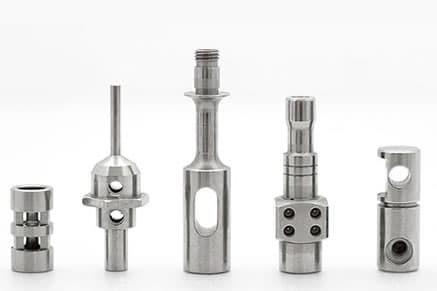
What is coextrusion?
Standard plastic extrusion is a manufacturing process in which molten plastic is forced through a die to give it a shape with a continuous cross-section. The process is typically used to make high-volume parts like tubing, fencing, cable, weather stripping, and window frames.
While most plastic extrusion involves uses a single extruder to melt a thermoplastic and feed it into the die, the process can also be used with two or more extruders to make multi-material extrusions. This is called coextrusion, and it is valuable because it is allows manufacturers to make parts with the properties of two different polymers. For example, an extrusion could have a layer of recycled material and a layer of virgin material. Another functional application would be an extrusion with a scratch-resistant or waterproof outer layer and a low-cost inner layer.
Coextrusion is different from the process of over jacketing extrusion, another type of multi-material extrusion that extrudes an outer layer of plastic material over a substrate, typically metal wire or cable. Coextrusion results in parts made or two or more plastics.
How the coextrusion process works
Coextrusion can be achieved using different types of extrusion, all of which work in different ways. Some of the most common varieties include:
Blown film coextrusion
Sheet coextrusion
Tubing coextrusion
During the coextrusion process, a different extruder (two or more) is set up for each polymer that will be used. Material flows simultaneously from each extruder into the die or feed block, which is set up to produce a layered extrusion in which the separate materials are laminated, rather than mixed together. The speed and size of each extruder can be altered to determine the thickness of each polymer layer.
The coextrusion process may involve just two or three layers (for parts like tubing with a weather-resistant exterior coating) or up to 10 layers (for parts like multi-color blown film plastic bags). As with standard extrusions, the coextrusion is typically cut into lengths or sections according to the needs of the manufacturer.
Advantages and disadvantages of coextrusion
There are several coextrusion advantages when compared to standard extrusion or other multi-layer manufacturing processes, such as the ability to harness material properties from multiple polymers at once. However, coextrusion is not suitable for all applications and comes with some important disadvantages such as recyclability issues.
Coextrusion disadvantages
Creates parts with the properties of two different polymers, e.g. tubing with a scratch-resistant surface
Expensive equipment due to multi-extruder setup
Unlike compound extrusion or use of polymer blends, coextrusion allows for precise placement of different material properties
Difficulty recycling extruded parts made of two or more different polymers that cannot be easily separated
Can enable cost savings with the use of low-cost (or recycled) core materials and high-performance shell materials
Coextruded polymers must exhibit similar melt flow behavior to one another to be extruded from the same die
Enables multicolor extrusions without secondary post-processing operations
Coextrusion uses
Coextrusion in its main forms (blown film, sheet, tubing) is used across a range of industries for a variety of purposes. Some of the most significant coextrusion applications include:
Scratch-resistant tubing and pipes that uses a durable polymer for the exterior layer and a different material for the interior
Vinyl fencing with a water-resistant and UV-resistant exterior layer and a low-cost fill
Various parts that incorporate recycled fill material with virgin exterior surfaces to minimize costs while maintaining a high-quality appearance
Food packaging and drinks bottles that include a barrier layer to prevent contamination, a low-cost recycled layer, and a virgin layer for the exterior
Multicolored plastic bags and other blown film products
Window frames with a rigid structural layer and a flexible layer that acts as a sealant
XTJ is a leading OEM Manufacturer that is dedicated to providing one-stop manufacturing solutions from prototype to production. We are proud to be an ISO 9001 certified system quality management company and we are determined to create value in every customer relationship. We do that through collaboration, innovation, process improvements, and exceptional workmanship.

